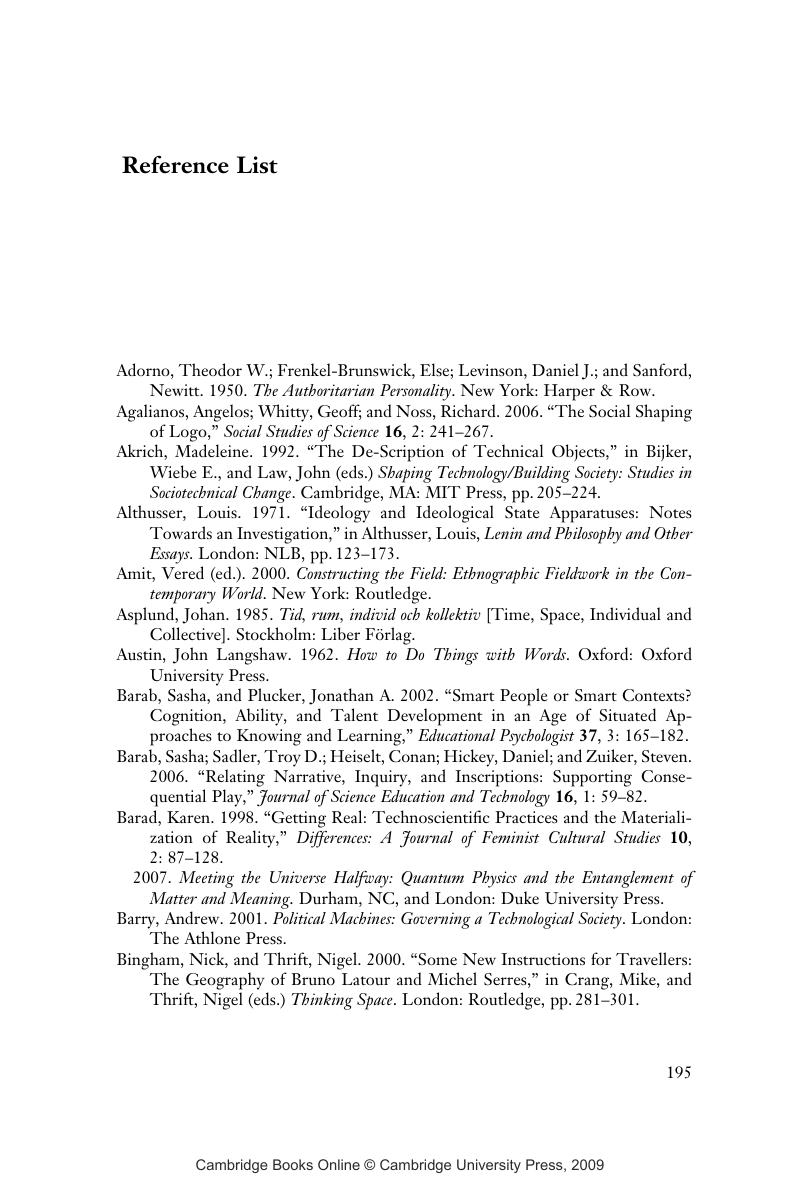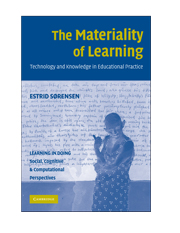Book contents
Reference List
Published online by Cambridge University Press: 15 September 2009
Summary

Information
- Type
- Chapter
- Information
- The Materiality of LearningTechnology and Knowledge in Educational Practice, pp. 195 - 206Publisher: Cambridge University PressPrint publication year: 2009
